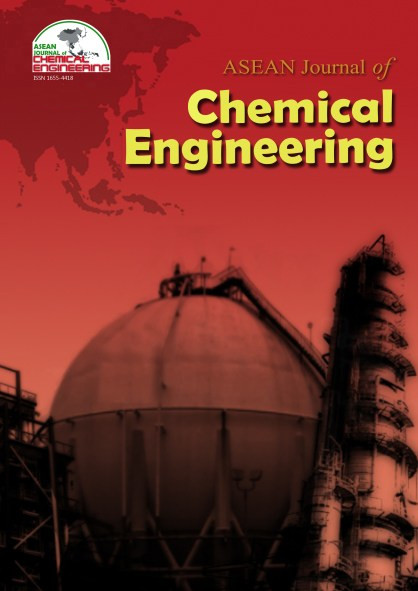Synthesis and Characterization of New Eco-Friendly Fire-Retardants Based on Soda-Silicate Glass
Abstract
Fire-retardants (FRs) are additives used to improve the fire-resistance of combustible materials. New generations of FRs must be effective and eco-friendly. Traditional inorganic FRs are non-hazardous but have limited fire-retardancy. Here, we aim to develop an innovative way to enhance the fire-retardancy of inorganic FRs. We synthesized a new type of FRs, called mATH, whose compositions are similar to soda-silicate glass (xNa2O.yK2O.zSiO2.tAl2O3). When applied to unsaturated polyester resin, mATH showed a much better performance than traditional aluminum trihydroxide (ATH). The better performance of mATH originated from its new working mechanism. Dehydrated mATH, as a soda-silicate glass, melts under the heat of the fire, which causes heat sink and produces a molten glass. The molten glass forms a charred insulating layer that prevents oxygen from contacting the interior combustible materials. This phenomenon significantly contributes to the fire-retarding behavior of mATH. Our findings open a new method for developing effective eco-friendly FRs.
References
2. Ashby, M. F. (2013). Material profiles. In Materials and the Environment, Second Edition, Ashby, M. F., ed., Boston, Butterworth-Heinemann. 459-595.
3. Chen, M.-J., Wang, X., Li, X.-L., Liu, X.-Y., Zhong, L., Wang, H.-Z., Liu, Z.-G. (2017). "The synergistic effect of cuprous oxide on an intumescent flame-retardant epoxy resin system." RSC Adv., 7, 35619-35628.
4. Chen, W., Liu, P., Min, L., Zhou, Y., Liu, Y., Wang, Q., Duan, W. (2018). "Non-covalently functionalized graphene oxide-based coating to enhance thermal stability and flame retardancy of PVA film." Nano-Micro Lett., 10, 39.
5. Cheng, X., Wu, J., Yao, C., Yang, G. (2019). "Flame-retardant mechanism of zinc borate and magnesium hydroxide in aluminum hypophosphite–based combination for TPE-S composites." J. Fire Sci., 37, 273-300.
6. Elbasuney, S. (2017). "Novel multi-component flame retardant system based on nanoscopic aluminium-trihydroxide (ATH)." Powder Technol., 305, 538-545.
7. Fredi, G., Dorigato, A., Fambri, L., Lopez-Cuesta, J.-M., Pegoretti, A. (2019). Synergistic effects of metal hydroxides and fumed nanosilica as fire retardants for polyethylene. Flame Retardancy and Thermal Stability of Materials, 2, 30.
8. Haile, M., Fomete, S., Lopez, I. D., Grunlan, J. C. (2016). "Aluminum hydroxide multilayer assembly capable of extinguishing flame on polyurethane foam." J. Mater. Sci., 51, 375-381.
9. Holder, K. M., Smith, R. J., Grunlan, J. C. (2017). "A Review of flame retardant nanocoatings prepared using layer-by-layer assembly of polyelectrolytes." J. Mater. Sci., 52, 12923-12959.
10. Hornsby, P. R. and Watson, C. L. (1990). "A study of the mechanism of flame retardance and smoke suppression in polymers filled with magnesium hydroxide." Polym. Degrad. Stab., 30, 73-87.
11. Karazi, S. M., Ahad, I. U., Benyounis, K. Y. (2017). Laser micromachining for transparent materials. Reference Module in Materials Science and Materials Engineering, Elsevier.
12. Laoutid, F., Lorgouilloux, M., Bonnaud, L., Lesueur, D., Dubois, P. (2017). "Fire retardant behaviour of halogen-free calcium-based hydrated minerals." Polym. Degrad. Stab., 136, 89-97.
13. Levan, S. L. (1984). Chemistry of fire retardancy. The chemistry of solid wood, American Chemical Society. 207: 531-574.
14. Martienssen, W. and Warlimont, H. (2005). Springer handbook of condensed matter and materials data, Springer Berlin Heidelberg.
15. Matar, S., Mirbach, M. J., Tayim, H. A. (1989). Alkylation processes. In Catalysis in petrochemical processes, Matar, S., Mirbach, M. J., Tayim, H. A., ed., Dordrecht, Springer Netherlands, 66-83.
16. Nine, M. J., Tran, D. N. H., Tung, T. T., Kabiri, S., Losic, D. (2005). "Graphene-borate as an efficient fire retardant for cellulosic materials with multiple and synergetic modes of action." ACS Appl. Mater. Interfaces, 9, 10160-10168.
17. Oualha, M. A., Amdouni, N., Laoutid, F. (2017). "Synergistic flame-retardant effect between calcium hydroxide and zinc borate in ethylene-vinyl acetate copolymer (EVA)." Polym. Degrad. Stab., 144, 315-324.
18. Patnaik, P. (2003). Handbook of inorganic chemicals, McGraw-Hill.
19. Pearce, E. M. and Liepins, L. (1975). "Flame retardants." Environ. Health Perspect. 11, 59-69.
20. Phan, H. T. Q., Nguyen, B. T., Pham, L. H., Pham, C. T., Do, T. V. V., Hoang, C. N., Nguyen, N. N., Kim, J.,Hoang, D. (2019). "Excellent fireproof characteristics and high thermal stability of rice husk-filled polyurethane with halogen-free flame retardant." Polymers, 11, 1587.
21. Rakotomalala, M., Wagner, S., Döring, M. (2010). "Recent developments in halogen free flame retardants for epoxy resins for electrical and electronic applications." Materials, 3, 4300-4327.
22. Rothon, R. N. (1995). Particulate-filled polymer composites, Harlow: Longman scientific and technical.
23. Weil, E. D. and Levchik, S. V. (2009). Flame retardants in commercial use or development for polyolefins. In Flame retardants for plastics and textiles, Carl Hanser Verlag GmbH & Co. KG: 3-34.
24. Weil, E. D. and Levchik, S. V. (2015). Introduction. Flame retardants for plastics and textiles, Carl Hanser Verlag GmbH & Co. KG: 1-4.
25. Zhang, J. and Wilkie, C. A. (2005). "Fire retardancy of polyethylene-alumina trihydrate containing clay as a synergist." Polym. Adv. Technol., 16, 549-553.
Copyright holder for articles is ASEAN Journal of Chemical Engineering. Articles published in ASEAN J. Chem. Eng. are distributed under a Creative Commons Attribution-NonCommercial 4.0 International (CC BY-NC 4.0) license.
Authors agree to transfer all copyright rights in and to the above work to the ASEAN Journal of Chemical Engineering Editorial Board so that the Editorial Board shall have the right to publish the work for non-profit use in any media or form. In return, authors retain: (1) all proprietary rights other than copyright; (2) re-use of all or part of the above paper in their other work; (3) right to reproduce or authorize others to reproduce the above paper for authors’ personal use or for company use if the source and the journal copyright notice is indicated, and if the reproduction is not made for the purpose of sale.



